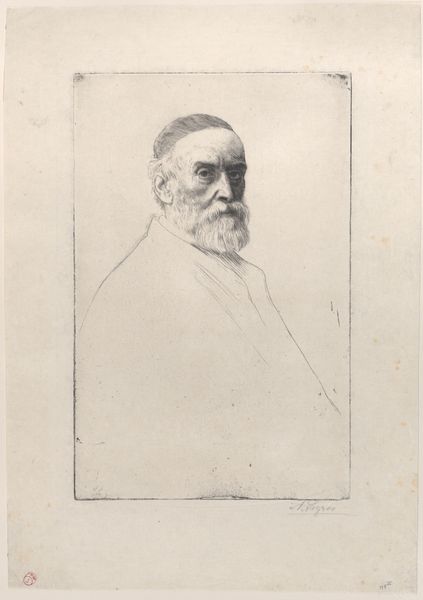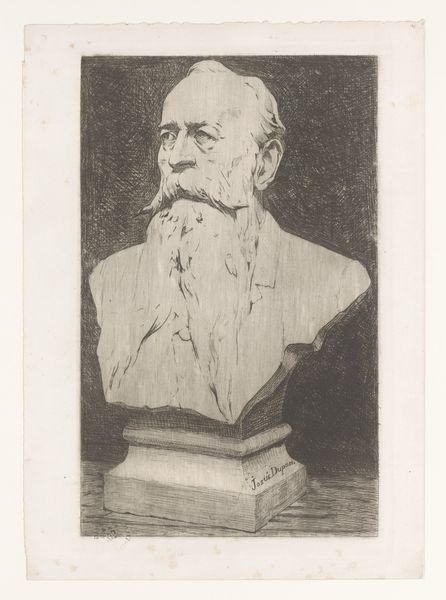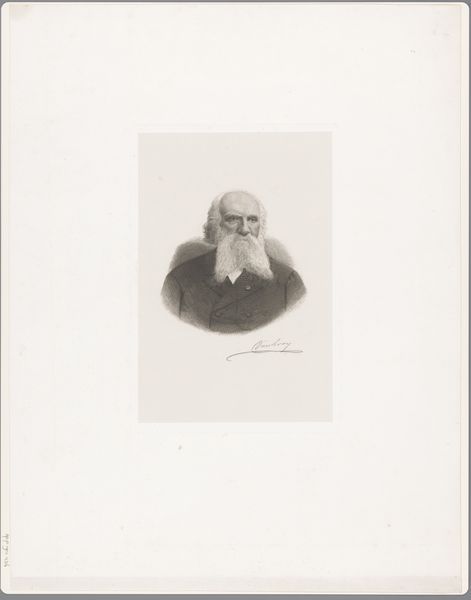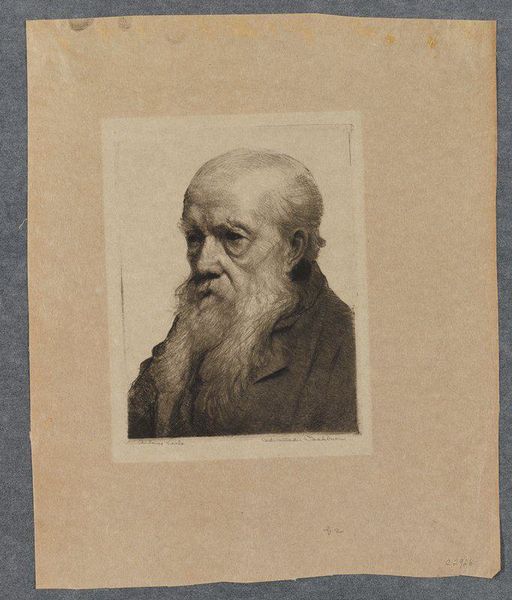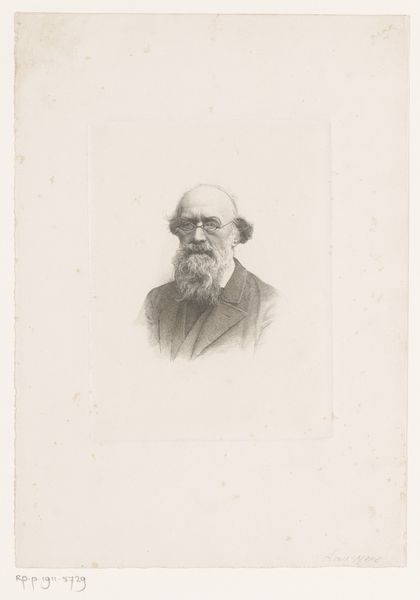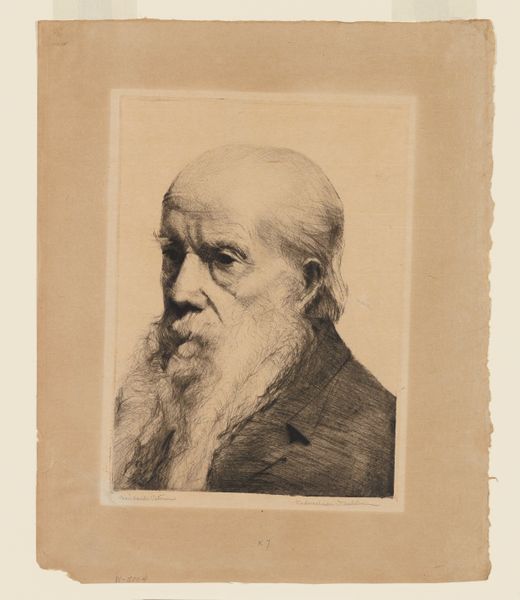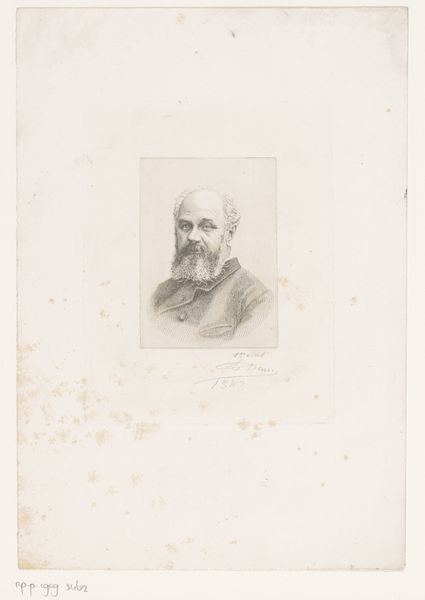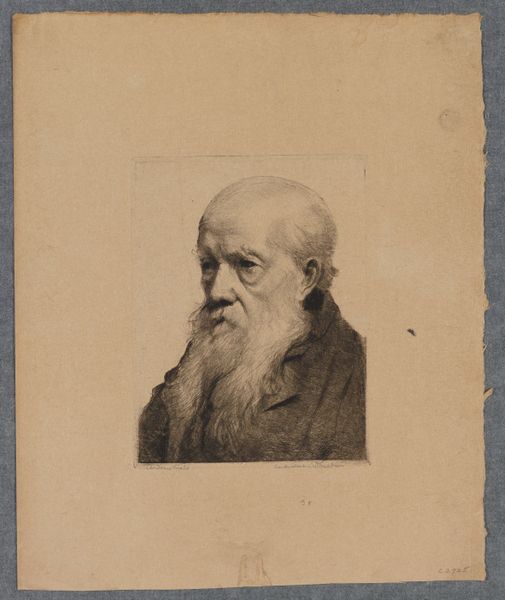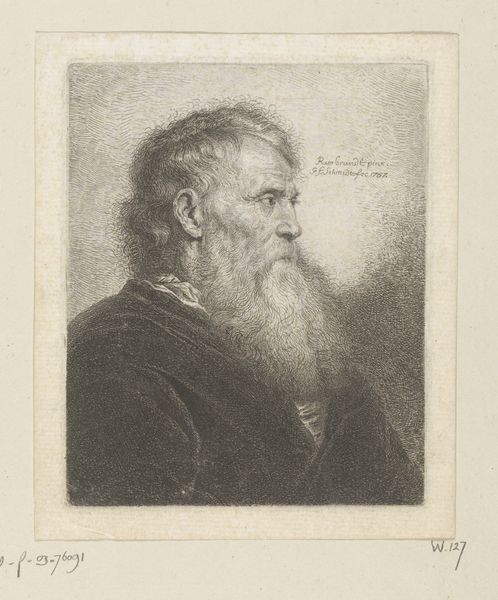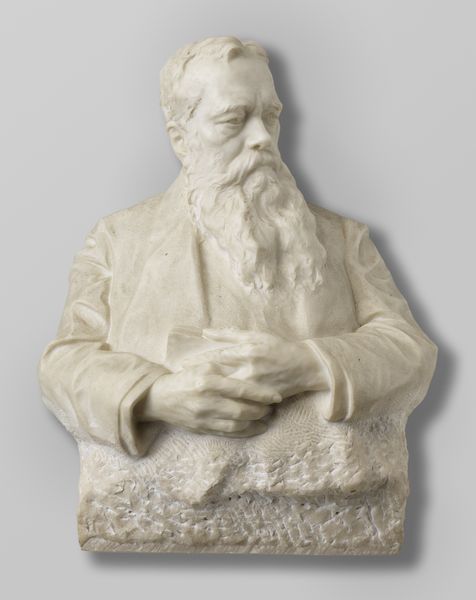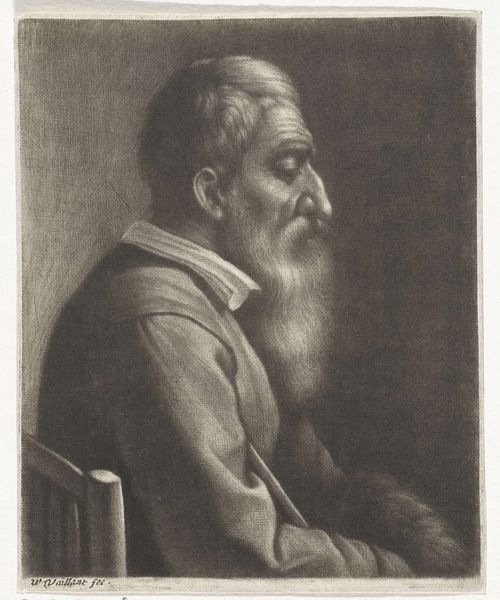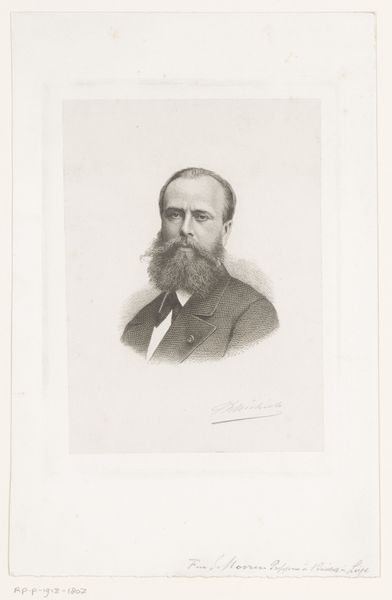
relief, sculpture, marble
#
portrait
#
sculpture
#
relief
#
classicism
#
sculpture
#
history-painting
#
marble
#
realism
Copyright: National Gallery of Art: CC0 1.0
Editor: Here we have John F. Flanagan’s *Portrait of a Bearded Gentleman*, a marble relief sculpture from around 1890. The monochromatic quality gives it a really timeless feel. What stands out to you? Curator: Immediately, the formal relationship between the raised figure and the flat plane commands attention. Consider how the artist utilizes varying depths to define form. Note the incisive lines delineating the gentleman's profile juxtaposed with the soft modeling of the beard. It’s an exercise in controlled contrast. Editor: I see that, especially the way the light catches those deep carvings around his beard and jacket. Does the smoothness of the marble contribute to its impact? Curator: Undeniably. The inherent qualities of marble—its coolness, its capacity to reflect light, its density—imbue the work with a sense of permanence and authority. The artist manipulates the medium to achieve subtle gradations of tone, enriching the surface texture. This isn’t merely representational; it’s a formal study in material and light. Editor: So it's less about who the gentleman is, and more about the artist exploring form and texture through sculpture? Curator: Precisely. Our understanding rests not on anecdotal information regarding the sitter's identity, but on the formal dialogue between the artist, material, and sculpted form. The emphasis resides in how Flanagan manipulates line, plane, and light to generate aesthetic impact. Editor: That makes me see it in a new way. I was focused on trying to read some sort of narrative, but focusing on the qualities of the medium really unlocked the artwork's impact. Curator: Agreed. By engaging with its intrinsic artistic features, we can derive the fullest appreciation for Flanagan’s artistic endeavor.
Comments
No comments
Be the first to comment and join the conversation on the ultimate creative platform.
